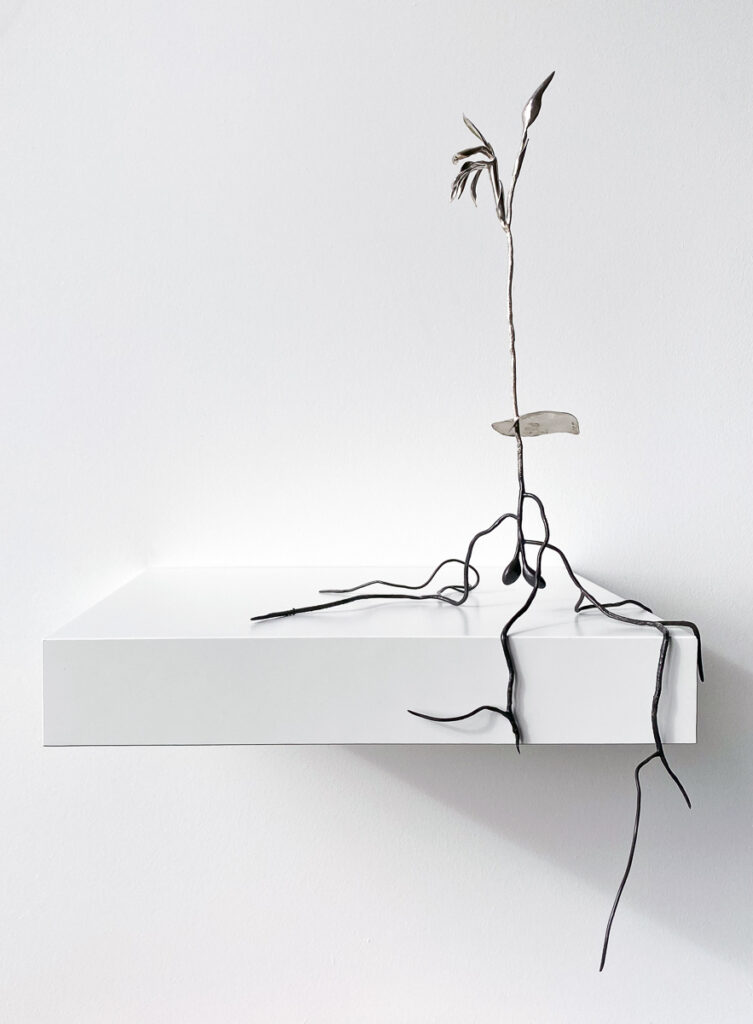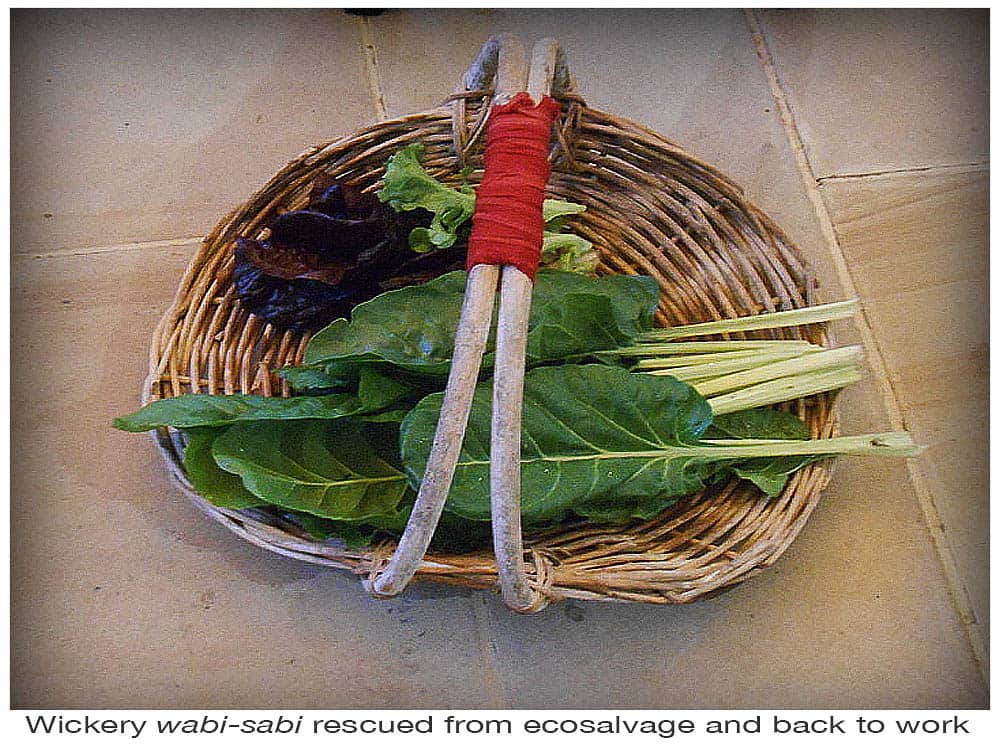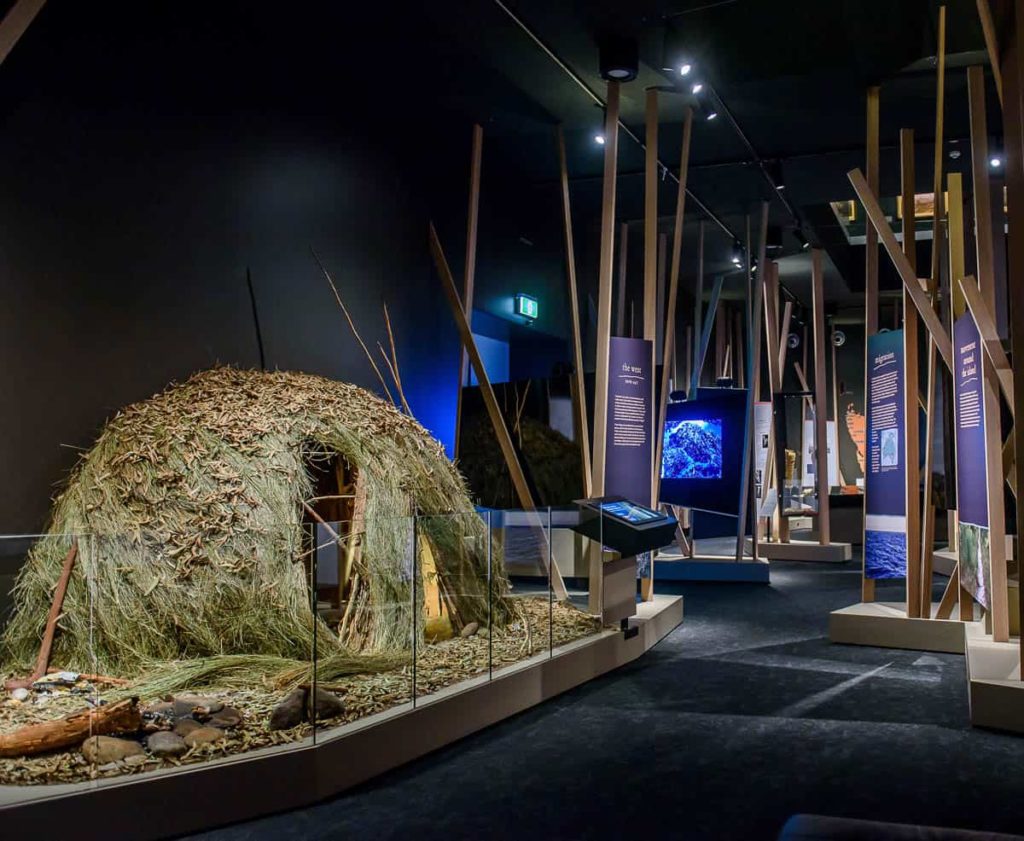Tasmania
 Andrea Barker: Memory of a Shard - Catherine Payne finds archeological resonances in the ceramic works by Andrea Barker.
Andrea Barker: Memory of a Shard - Catherine Payne finds archeological resonances in the ceramic works by Andrea Barker. The Rest of Us: Soft publishing as an act of radical care - In a homage to bookbinding, the pages of this book are individually knitted as blankets to be read and used by readers across the world.
The Rest of Us: Soft publishing as an act of radical care - In a homage to bookbinding, the pages of this book are individually knitted as blankets to be read and used by readers across the world. A driftwood testament - Dean Greeno continues his ancestors' practice of using dead trees as memorials.
A driftwood testament - Dean Greeno continues his ancestors' practice of using dead trees as memorials. Leonie Oakes ✿ Slippage - Leonie Oakes has been awarded our July Laurel for her paper dress that breathes.
Leonie Oakes ✿ Slippage - Leonie Oakes has been awarded our July Laurel for her paper dress that breathes. Long dance to home - Dominic White continues the dance of his forebears with a material art that rediscovers Country.
Long dance to home - Dominic White continues the dance of his forebears with a material art that rediscovers Country.  Duncan Meerding ✿ A light touch - Duncan Meerding's furniture and lighting are crafted with a precise touch, reflecting his vision of frayed light.
Duncan Meerding ✿ A light touch - Duncan Meerding's furniture and lighting are crafted with a precise touch, reflecting his vision of frayed light. sounds of clay and me, making - Toni Warburton describes the sounds that orchestrate her work in ceramics.
sounds of clay and me, making - Toni Warburton describes the sounds that orchestrate her work in ceramics.  Kelly Austin ✿ Suspended decompositions - Jane Stewart writes about Kelly Austin's ceramics, whose material response to the mined landscape of Queenstown reflects the genre of still life in painting.
Kelly Austin ✿ Suspended decompositions - Jane Stewart writes about Kelly Austin's ceramics, whose material response to the mined landscape of Queenstown reflects the genre of still life in painting. Wrapping the present within the past - From her Bruny Island home in Tasmania, Janine Combes gathers stray objects where memories live.
Wrapping the present within the past - From her Bruny Island home in Tasmania, Janine Combes gathers stray objects where memories live. Gabbee Stolp ✿ Memories in flux - Sarah Stewart finds the work of Tasmanian jeweller Gabbee Stolp reflects the fleeting beauty that flows down the Derwent River.
Gabbee Stolp ✿ Memories in flux - Sarah Stewart finds the work of Tasmanian jeweller Gabbee Stolp reflects the fleeting beauty that flows down the Derwent River. putiya makara wingani (can’t stop feeling) - Greg Lehman and Camila Marambio dialogue across the Pacific Ocean about the ancient now in Tasmania and the settler future in Chile.
putiya makara wingani (can’t stop feeling) - Greg Lehman and Camila Marambio dialogue across the Pacific Ocean about the ancient now in Tasmania and the settler future in Chile.  Sophie Carnell ✿ Gnat orchid - Our December laurel goes to a jeweller based in Bruny Island, Tasmania, for a silver sculpture inspired by the gnat orchid, whose elegant form clings to the land.
Sophie Carnell ✿ Gnat orchid - Our December laurel goes to a jeweller based in Bruny Island, Tasmania, for a silver sculpture inspired by the gnat orchid, whose elegant form clings to the land. What brought Hermie Cornelisse back to pottery - Linda Fredheim interviews legendary Tasmanian potter Hermie Cornelisse about her return to making after a decade working in a shoe shop.
What brought Hermie Cornelisse back to pottery - Linda Fredheim interviews legendary Tasmanian potter Hermie Cornelisse about her return to making after a decade working in a shoe shop. The ladybird garden of Chen Ping - Jan Hogan writes about a Tasmanian printmaker of Chinese origin whose work expresses a universal idiom of flowers.
The ladybird garden of Chen Ping - Jan Hogan writes about a Tasmanian printmaker of Chinese origin whose work expresses a universal idiom of flowers. The People’s Library is now open - The People's Library by A Published Event opens at Long Gallery in Salamanca Art Centre, Hobart.
The People’s Library is now open - The People's Library by A Published Event opens at Long Gallery in Salamanca Art Centre, Hobart. Crafting a ceramic habitat for a handfish - Not far from Hobart’s Salamanca Market, with its vendors hawking the usual arts and crafts, ceramicist Jane Bamford is creating something extraordinary.
Crafting a ceramic habitat for a handfish - Not far from Hobart’s Salamanca Market, with its vendors hawking the usual arts and crafts, ceramicist Jane Bamford is creating something extraordinary. Judith-Rose Thomas tunapri journeys through painting - Judith-Rose Thomas is a palawa artist who features in our On Offer exhibition. She has a life-long interest in the petroglyphs found in northern Tasmania. These have inspired a series of paintings that seek to animate those ancient designs.
Judith-Rose Thomas tunapri journeys through painting - Judith-Rose Thomas is a palawa artist who features in our On Offer exhibition. She has a life-long interest in the petroglyphs found in northern Tasmania. These have inspired a series of paintings that seek to animate those ancient designs. Quarterly essay: Libraries of Stone and Wood - A Published Event is a remarkable project for nurturing and housing original stories. Their narrative greenhouses have stimulated the growth of a unique creative scene in Tasmania.
Quarterly essay: Libraries of Stone and Wood - A Published Event is a remarkable project for nurturing and housing original stories. Their narrative greenhouses have stimulated the growth of a unique creative scene in Tasmania. 237 days: parallel / return - Black Matter is an Australia-Chile residency-based project that translates Gondwanian connections.
237 days: parallel / return - Black Matter is an Australia-Chile residency-based project that translates Gondwanian connections. New terrain in an old world - Zoë Veness writes about metal objects she made in homage to kunanyi / Mount Wellington
New terrain in an old world - Zoë Veness writes about metal objects she made in homage to kunanyi / Mount Wellington Wickery and place - Ray Norman reveals the hidden world of wickery and its role in our musing places
Wickery and place - Ray Norman reveals the hidden world of wickery and its role in our musing places Lost histories: Inscription and Place - Peter Hughes writes about place and memory in the work of the CUSP jewellery collective
Lost histories: Inscription and Place - Peter Hughes writes about place and memory in the work of the CUSP jewellery collective Craft classic: The spurtle - Patrick Senior describes the making of the spurtle, a craft classic used for stirring porridge
Craft classic: The spurtle - Patrick Senior describes the making of the spurtle, a craft classic used for stirring porridge Art at a glance: Tasmania’s roadside gallery - Lucy Hawthorne considers about the drive-by art that is so prevalent in Tasmania.
Art at a glance: Tasmania’s roadside gallery - Lucy Hawthorne considers about the drive-by art that is so prevalent in Tasmania. Slow design in wood - Laura McCusker speaks to the importance of care for materials and local production.
Slow design in wood - Laura McCusker speaks to the importance of care for materials and local production.  Wicker Wonderlust, a gallery experiment - Karina Clarke describes an experiment in asking a community to fill an empty space with baskets they've acquired.
Wicker Wonderlust, a gallery experiment - Karina Clarke describes an experiment in asking a community to fill an empty space with baskets they've acquired. Libraries of Stone and Wood - Justy Phillips and Margaret Woodward publish knowledge in rock and wood that reveals a lost Tasmania
Libraries of Stone and Wood - Justy Phillips and Margaret Woodward publish knowledge in rock and wood that reveals a lost Tasmania Holding space making place - Dee Taylor-Graham and Janny McKinnon write about the enduring sense of place in Tasmanian ceramics
Holding space making place - Dee Taylor-Graham and Janny McKinnon write about the enduring sense of place in Tasmanian ceramics Where the weaver left off - Gwen Egg discovers an ingenious fibre "needle and thread" used in traditional Tasmanian Aboriginal basket weaving
Where the weaver left off - Gwen Egg discovers an ingenious fibre "needle and thread" used in traditional Tasmanian Aboriginal basket weaving Building a better dome - Greg Lehman discovers tunapri knowledge involved in the construction of the palawa Tasmanian Aboriginal shelter
Building a better dome - Greg Lehman discovers tunapri knowledge involved in the construction of the palawa Tasmanian Aboriginal shelter Baluk Arts: Storied objects tied to Country - Tallara Gray and Neil Aldum talk about the collaboration with Baluk Arts to develop objects that tell powerful life stories for the exhibition In Cahoots.
Baluk Arts: Storied objects tied to Country - Tallara Gray and Neil Aldum talk about the collaboration with Baluk Arts to develop objects that tell powerful life stories for the exhibition In Cahoots. Southern Knowledge Symposium: Valuing Wisdom and Know-how from beyond the West - We invite and welcome all those keen to learn, participate, share and listen to dialogues about how the wisdom from places beyond the West can inform what we do.
Southern Knowledge Symposium: Valuing Wisdom and Know-how from beyond the West - We invite and welcome all those keen to learn, participate, share and listen to dialogues about how the wisdom from places beyond the West can inform what we do. Weaving land and people: the Gwen Egg story - In the third article about contemporary fibre artists, we venture south to explore the world of Gwen Egg. Egg’s life in fibre testifies to its power as a medium for binding the land with its peoples.
Weaving land and people: the Gwen Egg story - In the third article about contemporary fibre artists, we venture south to explore the world of Gwen Egg. Egg’s life in fibre testifies to its power as a medium for binding the land with its peoples.
